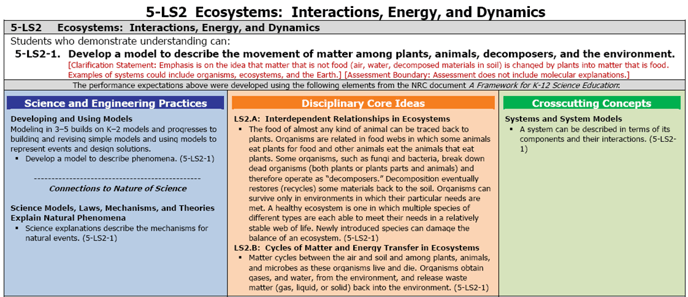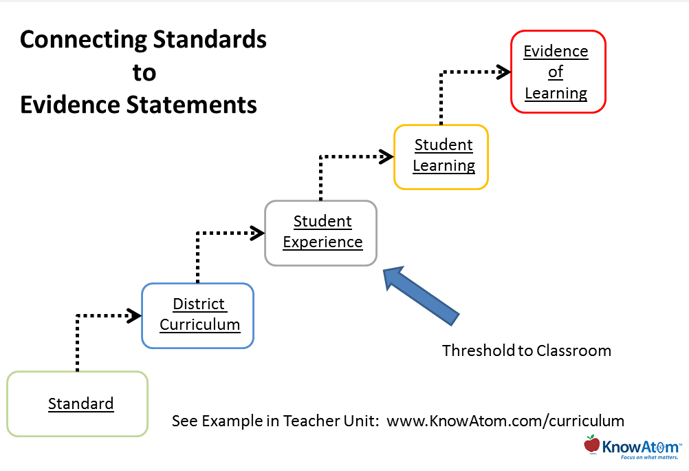A performance expectation broken down in three dimensions: science and engineering practices, disciplinary core ideas and crosscutting concepts. Each performance expectation is part of a larger framework.

The final habit of highly effective science teachers is building a framework of concept knowledge with the science and engineering practices. Above you can see how the new standards are laid out. They are built in three dimensions and are best thought of as performance expectations and part of a larger framework. In order for students to demonstrate understanding by developing a model and so forth (as expressed in this performance expectation), they have to have mastered the practices, the content and the crosscutting concepts within a classroom context in which all these threads are woven together. Once you create such an environment, you can ask students to demonstrate their understand in a novel context, which if they are mastery ready, they will be able to do.

In order to create students who can truly take on the roles of scientists and engineers, you must connect standards to evidence of student learning via district curriculum, student experience and student learning.
So where does this framework come from? Well, it relies on the scope and sequence we’ve talked about, but where does that come from? Quite simply, it comes from the standards, from which the district curriculum in turn stems, then becoming a student experience and student learning. The student experience is the threshold of the classroom, and the point at which classroom educators take over.
Unfortunately, the district curriculum for many folks is either non-existent or of poor quality. It is often fractured, composed of residual bits and pieces that are left over from 10-year-old broken kits, 15-year-old textbooks and other mostly defunct materials. When it falls on the teacher to compensate for this, that creates a situation in which there are frequently many highs and lows across the district. It’s not really the teacher’s job to do the district’s job, and some teachers do more to make up for this than others, resulting in extremely uneven results.
The key here is that when the district curriculum is fractured and incomplete, student experience will be compromised and will vary widely across the district. This will result in students who cannot meet the performance expectations set by the Next Generation Science Standards.
 Students who can meet the performance expectations will exhibit certain abilities, such as those outlined by this chart.
Students who can meet the performance expectations will exhibit certain abilities, such as those outlined by this chart.
As a result of that classroom experience, a student who has learned what is necessary to perform the expectation of the standard is going to be able to demonstrate that in multiple ways. They will be able to develop a model to describe phenomena, to describe relationships among the different components of an ecosystem, to use this model to describe the cycling of matter and more. A grid like this underpins every one of the lessons and units set forth by the NGSS performance expectations, and student learning will be exemplified through evidence statements such as these.
This becomes very powerful when carried over the course of a year and continued throughout the years, from 1st grade to 8th. And as students move from one grade level to the next, if you've done things well, the value becomes even greater. If you think of it like sheets, the thread count increases. Students get a new angle and a deeper understanding. As a result, they become more proficient and better able to generalize and synthesize with what they've learned. You can take action on that in the classroom simply by viewing these standards, which require the classroom to be a context where the three dimensions can come together and they connect in groups to other standards. Again, no concept is taught in isolation.
It’s also important to recognize that just because a standard falls at the end of a year, that doesn’t mean they shouldn’t be introduced earlier. Many people say, "Oh, we have grade-specific standards now," but that’s actually incorrect. What we have are standards intended to be mastered by the end of certain grade levels. That’s very different than saying the standard pertains only to that grade level. Rather, they should be introduced, mastered and reinforced for years prior to the end of that grade, because you can’t master something in a single year. No skill is mastered in a single moment, after all, neither as a child nor as an adult. With that in mind, keeping the standards of later years in mind while teaching is always a benefit to your students, and is how these units are designed.





